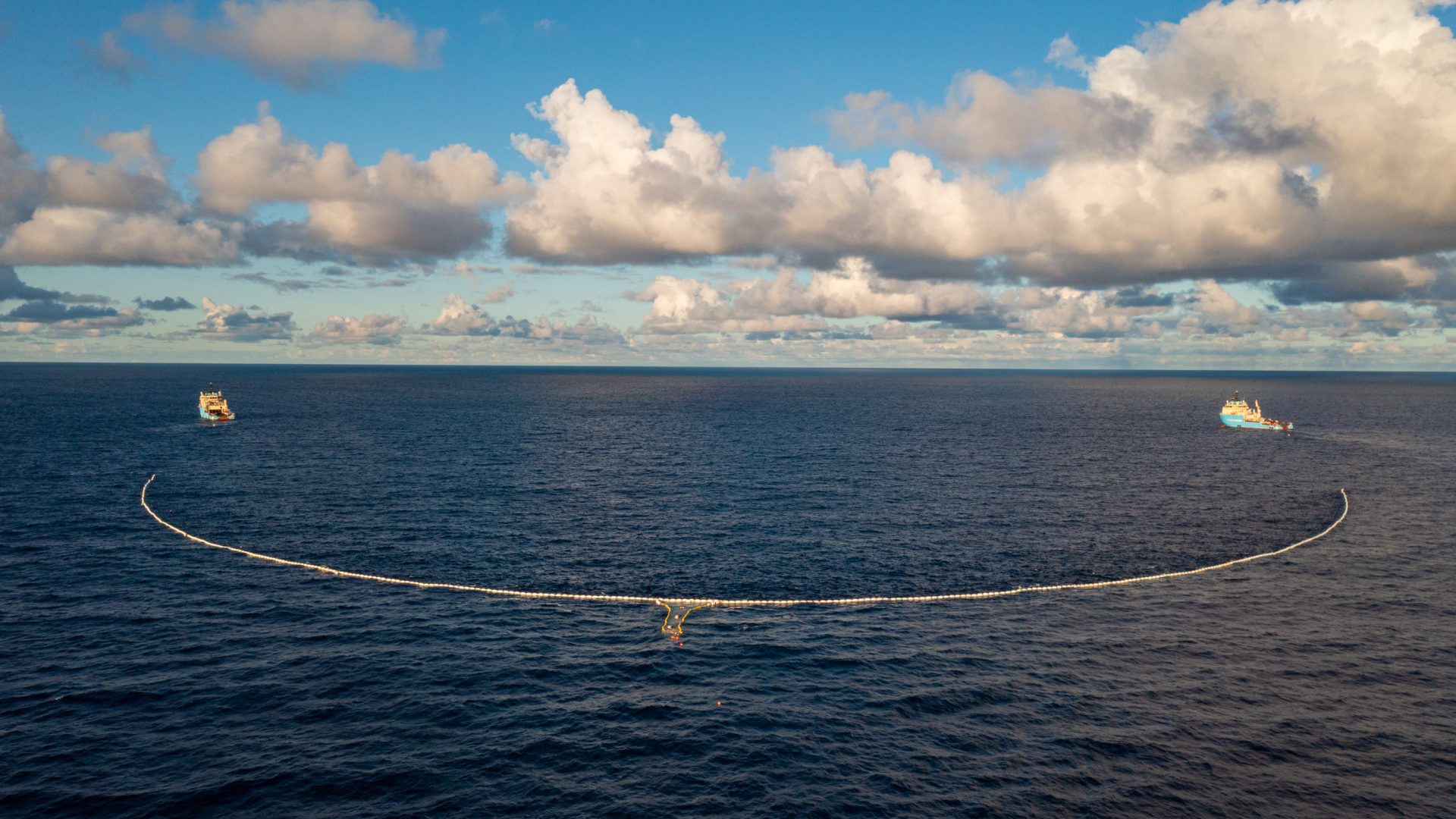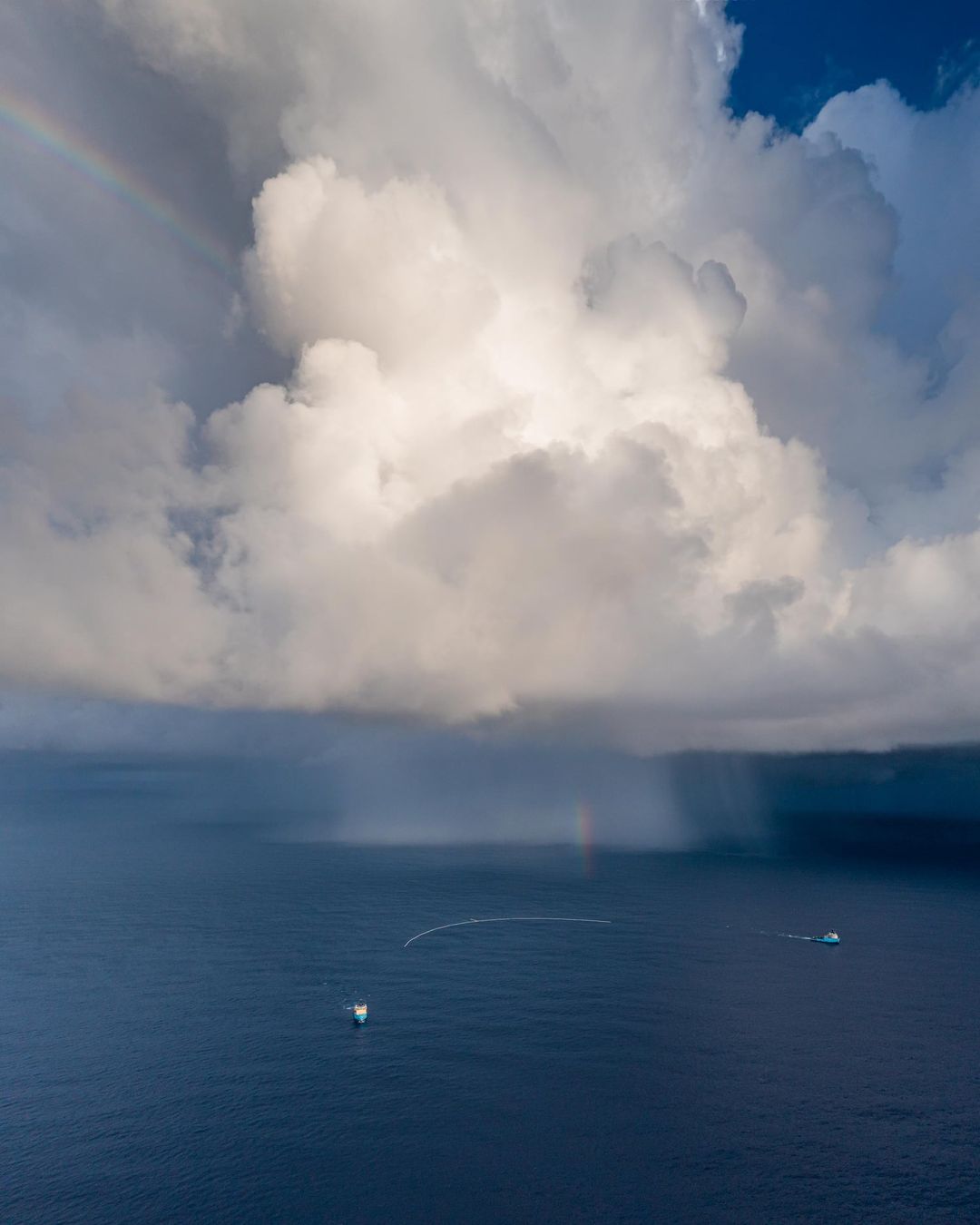
After a successful 12-week testing campaign in the Pacific confirmed proof of technology for the ocean cleanup design, Boyan Slat’s System 002 “JENNY” will take to the seas to begin to remove the plastic that makes up the Great Pacific Garbage Patch.
The day has come to celebrate the beginning of the end of the infamous Great Pacific Garbage Patch
On Wednesday, October 20th, The Ocean Cleanup welcomes back the offshore crew after a successful 12-week testing campaign in the Pacific that has led to proof of technology for our ocean cleanup design. With System 002 and plastic onboard, there will be a brief pause at the Victoria Harbor to celebrate the dedication of the team and supporters before returning to the patch. There is no time to waste – cleanup is possible and it is imminent.



Faster cleanup
To succeed in their mission, The Ocean Cleanup need a technology that not only captures plastic but whose design and operation are suited for growth into a global fleet. System 001/B (2019), achieved a relative speed difference that resulted in effective collection and retention of plastic.
However, in order to achieve a goal of 90% reduction of floating ocean plastic by 2040, its parachute sea anchor design would require us to deploy hundreds of systems. To the team, this is unfeasible, so they continued to advance their research and design. With a persistent problem that grows worse by the day, there is an urgency to reduce pollution as quickly as possible.

Improved System
Using the learnings and data collected from the operation of System 001 and 001/B, they formulated a new design for System 002. One key design improvement is the incorporation of active propulsion to move the system slightly faster than the flow of plastic in the water and maintain a continuous stable speed difference.
They are also introducing the ability to steer the system, to reposition operations as needed into zones that have the highest density of plastic. Learn more about the design of System 002 on the Oceans page.

System 002 checklist
During the upcoming Pacific Ocean campaign, the goal is to validate the System 002 design. For success, they need to have limited negative environmental impact, no safety issues during operation, as well as realise a significant level of plastic extraction.
If they reach these achievements, they would remain in the GPGP and continue collecting insights and harvesting more plastic. They will also use the time offshore to continue gathering data to further their knowledge of the organisms in the gyre, and improve understanding of how The Ocean Cleanup technology could interact with sealife. They will also be able to verify the efficacy of their planned environmental mitigation measures.
Source: TheOceanCleanup

Beyond system 002
After twelve weeks of offshore testing in the Great Pacific Garbage Patch with System 002, in October 2021, the ocean technology was proven. It is the first time Boyan Slat’s organisation could (effectively and repeatedly) demonstrate that a scalable cleanup method can remove trash from the ocean garbage patches, from tiny fragments of debris up to huge ghost nets.
With the technology proven, they will return to the patch, commence cleanup, continue gathering learnings, and, in parallel, begin working on System 003, progressing to the Validation Phase. To advance to the Validation Phase, they say they must be able to confirm the design is their most effective, scalable concept. With some hardware updates and an extended size, System 003 will serve as a blueprint for scale-up.
Source: TheOceanCleanup


Watch the livestream at 1 PM PST | 4 PM EST | 10 PM CEST on October 20th
There is no time to waste – cleanup is possible and it is imminent. We can do this – and we invite you to join us.
Watch the livestream at 1 PM PST | 4 PM EST | 10 PM CEST on October 20th.
Watch it live or join on location (Dallas Road, Pier B., Ogden Point, Victoria, BC, Canada). All times in local PST time.
- 9:25 AM – 10:30 AM Marine parade organized by Victoria Esquimalt Harbour Society. Optimal viewing location along Dallas Road, Victoria Canada.
- 11:00 AM Doors open to the cruise terminal and public indoor exhibition
- 11:30 AM – 12:30 PM Meet and greet with The Ocean Cleanup crew

DONATE TO THE OCEAN CLEANUP: WITH YOUR SUPPORT WE CAN RID THE OCEANS OF PLASTIC
With the support of individuals, corporations, and governments all over the world, we will work towards a future where plastic no longer pollutes our oceans. We are currently testing our ocean cleanup technology in the Great Pacific Garbage Patch, as well as working on more river Interceptor deployments, aiming to have 15 interceptors in place by end of 2022.<br /> * Trialed 2 ocean systems resulting in our first ocean plastic catch, and a third one deployed in August 2021 * Launched river Interceptors in 4 countries, with many more in the pipeline * Published over 20 peer-reviewed articles to enhance the global plastic pollution knowledge * Grew from a team of volunteers to over 100 employees in 5 years * Removed over 1 million pounds of trash from the environment (up till March 2021)